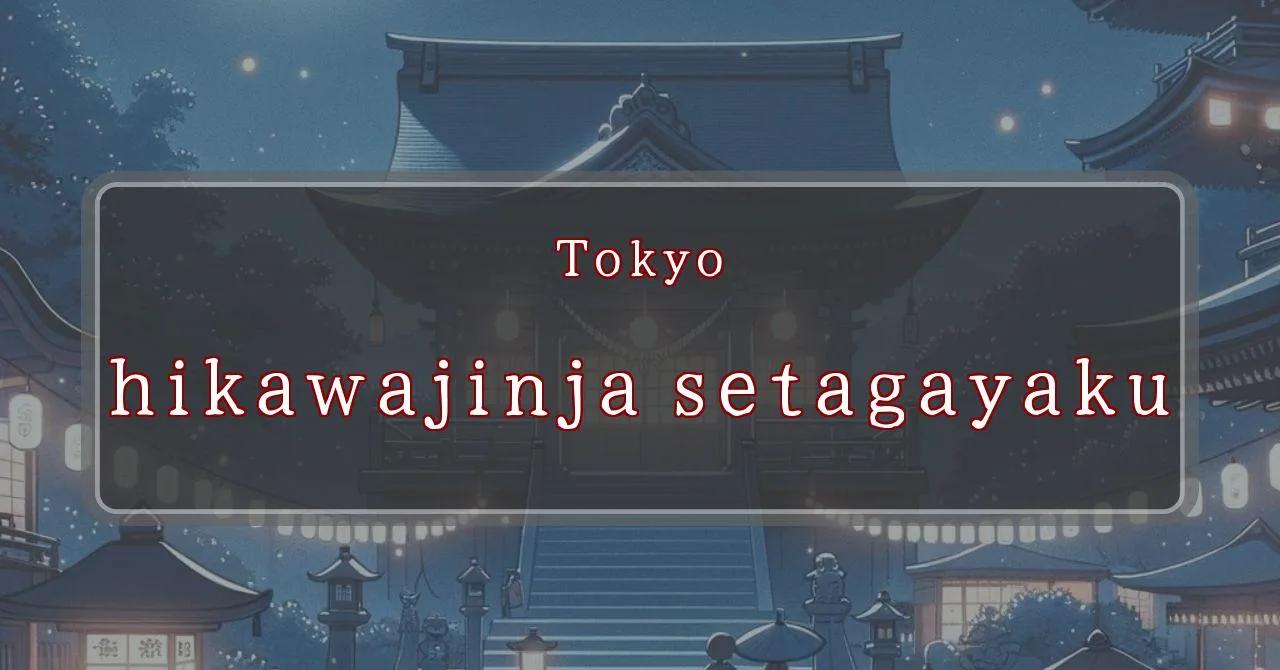Gleaming lights, vibrant festival
Basic Information
Hikawa Jinja Shrine is a Shinto shrine located in Setagaya Ward, Tokyo, Japan. It is dedicated to the god Susanoo-no-Mikoto, the god of storms, seas, and agriculture.
- Address: 4-26-1 Kitami, Setagaya-ku, Tokyo 157-0067
- Phone Number: 03-3416-1240
- Access: 15-minute walk from Kitami Station on the Odakyu Line
- Festival Days: October 2nd Sunday (Reiwa 6)
Main Events and Attractions of the Festival
The Hikawa Jinja Shrine Festival is an annual event that takes place on the second Sunday of October. The festival features a variety of events and attractions, including:
Mikoshi Procession
The highlight of the festival is the mikoshi procession, in which a portable shrine is carried through the streets of Setagaya Ward. The mikoshi is carried by a team of people, and it is believed that carrying the mikoshi brings good luck and fortune.
Kagura Performance
Kagura is a traditional Japanese dance and music performance that is often performed at Shinto shrines. During the Hikawa Jinja Shrine Festival, kagura is performed by a group of trained dancers and musicians. The performance is said to bring good luck and fortune to the community.
Food Stalls
A variety of food stalls are set up at the festival, selling a variety of Japanese dishes and snacks. Some of the most popular dishes include yakitori (grilled chicken skewers), takoyaki (octopus balls), and taiyaki (fish-shaped cakes filled with sweet red bean paste).
Games and Activities
There are also a variety of games and activities for children and adults to enjoy at the festival. Some of the most popular games include ring toss, beanbag toss, and goldfish scooping. There are also often live music performances and other entertainment.
Blessings and Deities
Hikawa Jinja Shrine is dedicated to the god Susanoo-no-Mikoto, the god of storms, seas, and agriculture. Susanoo-no-Mikoto is also known as the god of protection and warding off evil spirits. He is said to have slain the eight-headed serpent Yamata no Orochi and rescued the maiden Kushinada-hime. As a result, he is also revered as the god of marriage and childbirth.
- Susanoo-no-Mikoto: God of storms, seas, agriculture, protection, and warding off evil spirits
- Kushinada-hime: Maiden rescued by Susanoo-no-Mikoto; goddess of marriage and childbirth
Origin and History
The origins of Hikawa Jinja Shrine are unclear, but it is believed to have been founded in the 13th century. The shrine was originally located in a different part of Setagaya Ward, but it was moved to its current location in 1687. The shrine has been rebuilt several times over the years, most recently in 1923.
- Founded: 13th century
- Moved to current location: 1687
- Rebuilt: 1923
Tips and Notes for Visitors
Here are some tips and notes for visitors to the Hikawa Jinja Shrine Festival:
- The festival is held on the second Sunday of October each year.
- The festival is free to attend.
- The festival is a popular event, so it is advisable to arrive early to avoid crowds.
- There are a variety of food stalls at the festival, so you can enjoy a variety of Japanese dishes and snacks.
- There are also a variety of games and activities for children and adults to enjoy at the festival.
Parking Information
There is no parking lot at Hikawa Jinja Shrine. However, there are several public parking lots nearby.
- Setagaya Public Parking Lot: 5-minute walk from the shrine
- Kitami Public Parking Lot: 10-minute walk from the shrine
- Setagaya Ward Office Parking Lot: 15-minute walk from the shrine
Popular Stalls and Food Carts in Recent Years
| Type of Stall | Description |
|---|---|
| Takoyaki | A staple at Japanese festivals. Characterized by a crispy outside and a creamy inside. |
| Jaga Butter | A simple yet popular snack of hot potatoes lavishly topped with melted butter. |
| Baby Castella | Small castella cakes, sweet and fluffy treats enjoyed by children and adults alike. |
| Grilled Ayu with Salt | Fresh ayu fish grilled whole with salt, a savory taste of Japanese summer. |
| Shaapin | A unique gourmet item influenced by foreign cuisine, with a chewy skin wrapping the filling. |
| Okonomiyaki | A Japanese grilled dish where you often choose your own ingredients for a personalized flavor. |
| Cotton Candy | A fluffy, sweet snack that’s extremely popular with children. |
| Chocolate Banana | A banana coated in chocolate, a fun and visually appealing dessert. |
| Kushiyaki | Various types of ingredients skewered and grilled, an easy-to-enjoy snack. |
| Yakisoba | Fried noodles mixed with a special sauce, a fast food favorite in Japan. |



